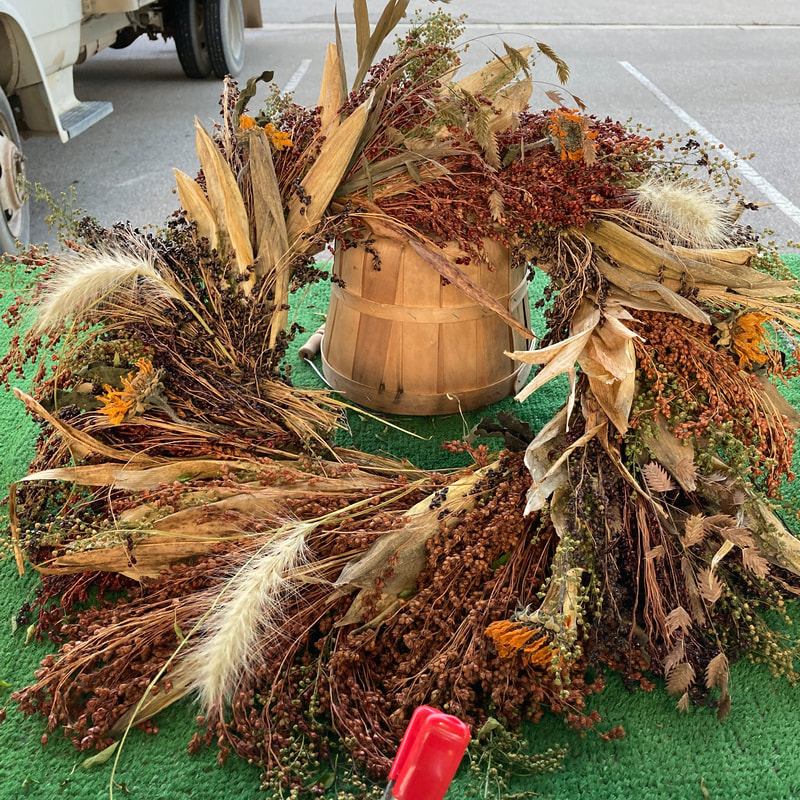|
Photo and article by Donna Iverson Sweet Annie (Artemisia annua) and broom corn wreath said the label. The smell was sweet and intoxicating. Fall is prime time for wreaths …wreaths of all kinds …pine cone, herbal, evergreen, and woodland. Wreaths with red bows. Wreaths with dried flowers. Wreaths made out of grapevines. Wreaths constructed from Willow branches. Ivy wreaths. Wreaths made out of sugar maple leaves. Homemade wreaths and store bought ones. Wreaths hanging in doors and in windows. Wreaths decorating parks and store fronts. Even wreaths made out of weeds, like Sweet Annie. A native of China, Sweet Annie has naturalized in the Midwest, including Michigan. It is free for the taking. Popular in dried flower crafts, it grows in poor soil, in sunny locations and is deer resistant. It has fern-like leaves and small chartreuse flowers. It is also known as Sweet Wormwood. Allergic reactions like sneezing and skin irritation are common so gardeners beware. But if you are not allergic, Sweet Annie makes a great natural air freshener. “Slow to germinate, late to bloom, and somewhat plain and gangly, Sweet Annie is the tomboy of everlasting gardens,” writes a Mother Earth gardener in a recent magazine article. The Chinese classify Sweet Annie as an herb, as it is used to treat malaria and is being studied as an antidote to Lyme disease. In 2015, a Chinese scientist, Tu Youyou won the Nobel Prize in medicine for discovering its antimalarial qualities. The prize citation states: "for her discoveries concerning a novel therapy against Malaria” which has improved the health of millions of people. If you wish to plant Sweet Annie in your garden, seeds are available from Johnny’s Seed company. Search YouTube for directions on “Making a Sweet Annie Wreath.”
0 Comments
Your comment will be posted after it is approved.
Leave a Reply. |
Archives
April 2024
Categories |

 RSS Feed
RSS Feed